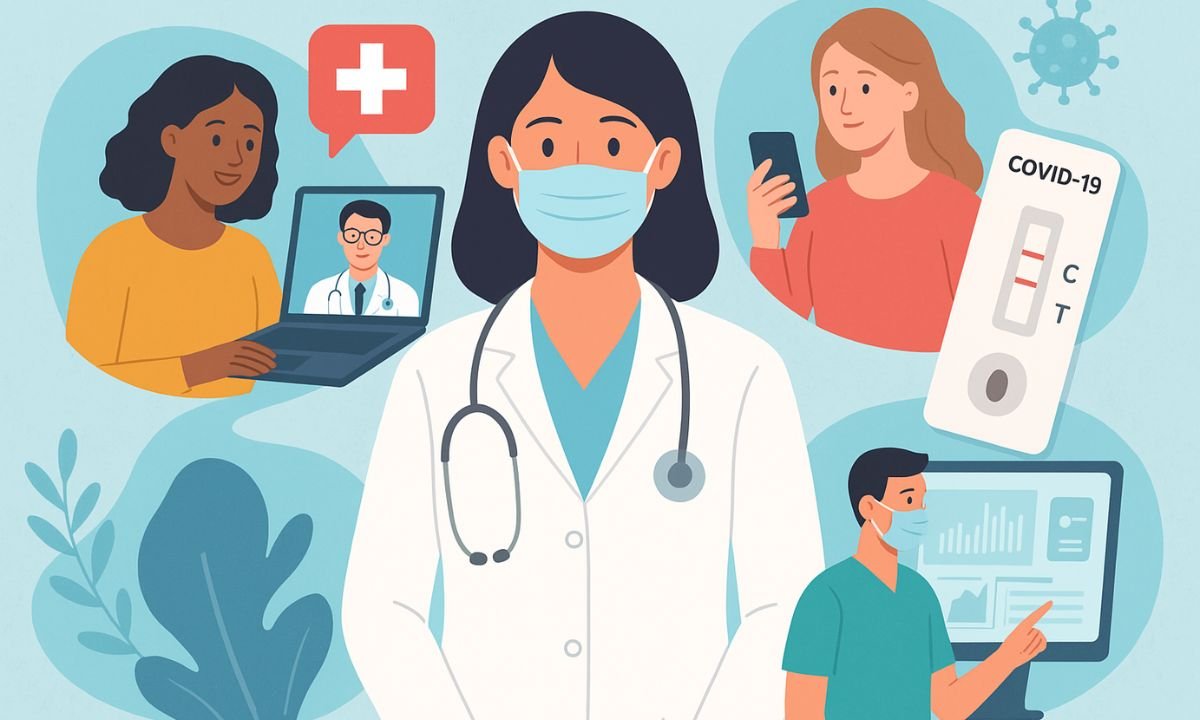When COVID-19 first appeared, the world froze. Hospitals were flooded, scientists raced against time, and people stayed inside their homes. It was a time of fear, but it was also a turning point for medicine. The pandemic forced doctors, researchers, and healthcare systems to think differently. Today, medicine is not the same as it was before 2020 — and that’s not a bad thing.
Healthcare Went Digital
Before COVID-19, seeing a doctor meant sitting in a waiting room, flipping through old magazines. But during the pandemic, hospitals started offering telemedicine — medical care through video calls. This wasn’t just convenient; it was life-saving. People with mild symptoms could get advice from home, reducing the risk of spreading the virus.
Even now, many people prefer online consultations for follow-ups, therapy sessions, and minor illnesses. It’s like having a doctor in your pocket.
Faster Vaccine Development
Before 2020, vaccines could take years — sometimes decades — to develop. COVID-19 changed that. Using new technology like mRNA, scientists created vaccines in less than a year. This was unheard of.
These advances are now being used for other diseases, like cancer and flu. In a way, the COVID-19 vaccine became a roadmap for faster, safer medicine in the future.
Better Emergency Preparedness
Hospitals learned the hard way that they needed better plans for large outbreaks. Now, many countries have emergency stockpiles of masks, ventilators, and protective gear. Medical workers also receive special training to handle future crises more efficiently.
It’s like a firefighter’s drill — you hope you never need it, but you’re ready if you do.
Focus on Mental Health
COVID-19 wasn’t just a physical health crisis — it was a mental one too. Lockdowns, isolation, and fear made anxiety and depression more common.
Because of this, healthcare providers began paying more attention to mental health services. Online therapy, stress management programs, and community support became more accessible. It’s no longer a hidden conversation; mental health is now part of overall health.
Improved Global Collaboration
During the pandemic, scientists from different countries shared data, research, and discoveries like never before. They worked together instead of competing.
This spirit of cooperation has continued. Today, global networks are ready to respond faster to new viruses. It’s a reminder that health problems don’t stop at borders — and neither should solutions.
Rise of At-Home Testing
Remember the long lines for COVID tests? That challenge led to at-home test kits. Now, you can test for COVID, flu, and other conditions without visiting a clinic.
It’s simple, quick, and helps people take control of their own health. This trend is likely to expand, making healthcare more personal and convenient.
Better Public Health Awareness
Before the pandemic, few people thought about things like handwashing, mask-wearing, or social distancing. Now, these habits are second nature in many places.
Public awareness about how viruses spread is higher than ever. People understand that small actions can protect not just themselves, but entire communities.
Technology in Hospitals
From AI-powered scanning to robotic assistance in surgeries, technology in hospitals got a big boost during the pandemic. Many hospitals adopted systems to track patient health in real time, improving care and reducing mistakes.
This mix of human expertise and technology is shaping a new era of medicine — one that’s smarter, faster, and safer.
Conclusion
COVID-19 was one of the biggest challenges modern medicine has ever faced, but it also became one of its greatest teachers. It sped up innovation, improved mental health awareness, and made healthcare more accessible. The changes we saw were not temporary; they set the stage for a future where medicine is faster, smarter, and more connected.














